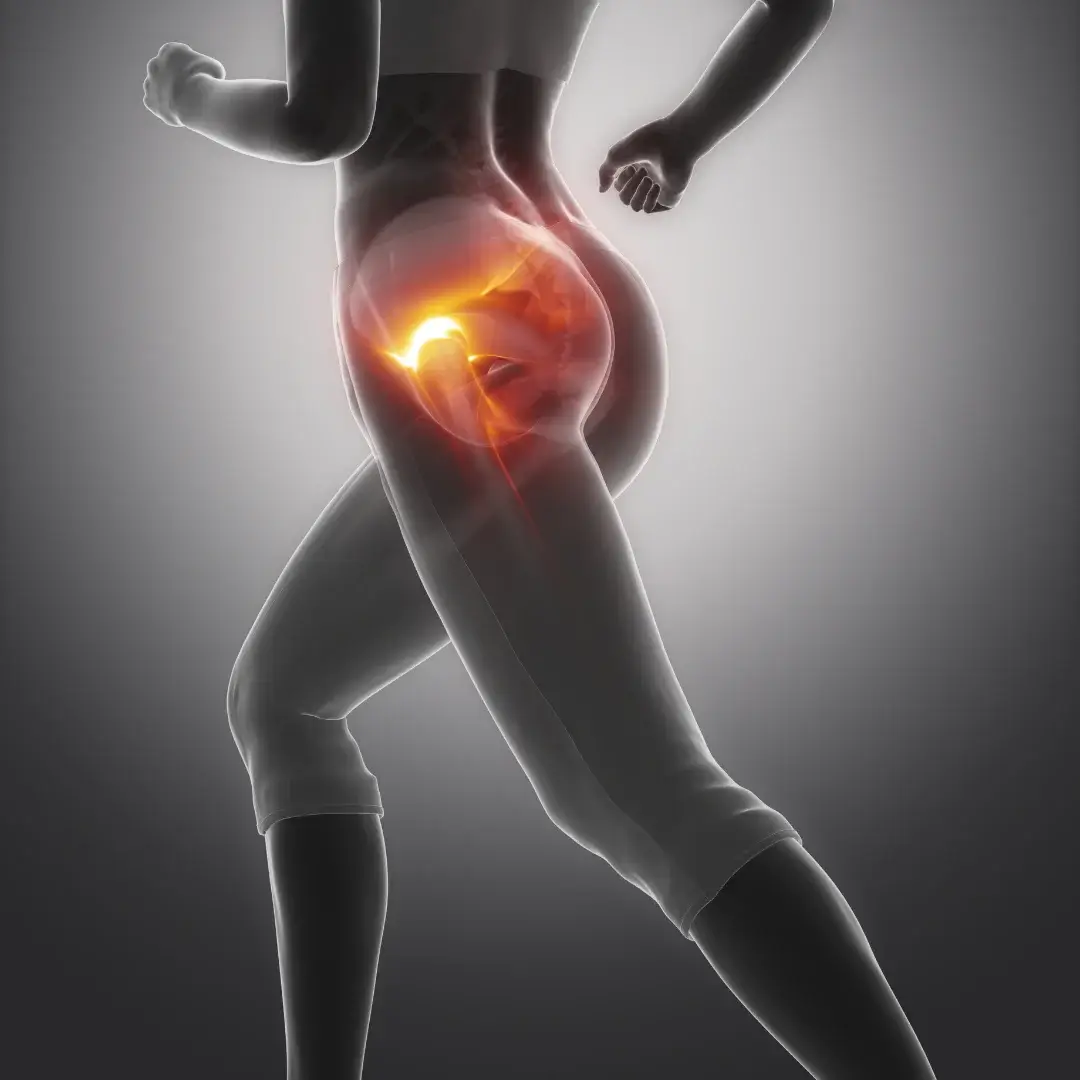Overview:
Hip arthritis, also known as hip osteoarthritis, is a degenerative joint condition characterised by the gradual breakdown of cartilage in the hip joint. This condition commonly affects older adults but can also occur due to injury, excessive wear and tear, or underlying medical conditions.
Anatomy:
The hip joint is a ball-and-socket joint where the rounded head of the femur (thigh bone) fits into the acetabulum (socket) of the pelvis. Articular cartilage covers the surfaces of the bones, providing cushioning and allowing smooth movement of the joint. In hip arthritis, the cartilage becomes worn and damaged, leading to friction, pain, and stiffness in the hip joint.
Causes:
Hip arthritis typically develops gradually over time due to a combination of factors, including:
- Age: The risk of developing hip arthritis increases with age as cartilage naturally deteriorates over time.
- Joint Overuse: Repetitive stress or excessive use of the hip joint, such as from high-impact activities or heavy lifting, can accelerate cartilage wear and tear.
- Joint Injury: Previous hip injuries, fractures, or trauma to the hip joint can predispose individuals to develop arthritis later in life.
- Genetics: Genetic factors may play a role in the development of hip arthritis, with certain individuals being more susceptible to cartilage degeneration.
- Obesity: Excess body weight places increased stress on the hip joint, leading to accelerated cartilage breakdown and joint degeneration.
Symptoms:
The symptoms of hip arthritis may vary in severity but commonly include:
- Hip Pain: Persistent pain or discomfort in the hip joint, often described as a deep ache or throbbing sensation.
- Stiffness: Decreased range of motion and stiffness in the hip joint, particularly after periods of inactivity or prolonged sitting.
- Limited Mobility: Difficulty performing activities that require bending, lifting, or weight-bearing on the affected hip.
- Joint Swelling: Swelling or inflammation around the hip joint, accompanied by warmth and tenderness to the touch.
- Joint Instability: Feeling of instability or weakness in the hip joint, especially when walking or standing.
- Decreased Function: Impaired ability to walk, climb stairs, or engage in physical activities due to hip pain and stiffness.
Diagnosis:
Diagnosis of hip arthritis typically involves a comprehensive evaluation by a healthcare provider, including:
- Medical History: Discussion of symptoms, previous hip injuries, medical conditions, and family history of arthritis.
- Physical Examination: Assessment of hip joint mobility, range of motion, and signs of inflammation or joint deformity.
- Imaging Studies: X-rays, magnetic resonance imaging (MRI), or computed tomography (CT) scans may be ordered to visualise changes in the hip joint, including cartilage loss, bone spurs, and joint deformities.
Treatment:
Treatment for hip arthritis aims to alleviate pain, improve joint function, and enhance quality of life. Common treatment options include:
- Medications: Nonsteroidal anti-inflammatory drugs (NSAIDs), acetaminophen, or corticosteroid injections may be prescribed to reduce pain and inflammation in the hip joint.
- Physical Therapy: Gentle stretching and strengthening exercises under the guidance of a physical therapist can help improve hip joint mobility, stability, and muscle strength.
- Weight Management: Maintaining a healthy weight through diet and exercise can help reduce stress on the hip joint and slow the progression of arthritis.
- Assistive Devices: Using a cane, walker, or other assistive devices can help offload weight from the affected hip and improve mobility.
- Lifestyle Modifications: Avoiding high-impact activities, modifying daily activities to reduce joint stress, and practising proper posture can help manage symptoms and preserve hip joint function.
- Surgery: In severe cases of hip arthritis that do not respond to conservative treatments, surgical options such as hip replacement surgery may be considered to replace the damaged joint with an artificial implant.
Outlook/Prognosis:
The prognosis for hip arthritis depends on the severity of the condition, individual response to treatment, and adherence to lifestyle modifications. While hip arthritis is a chronic and progressive condition, appropriate management strategies can help alleviate symptoms, slow disease progression, and improve overall quality of life. By working closely with healthcare providers and implementing targeted interventions, individuals with hip arthritis can effectively manage their symptoms and maintain functional independence for as long as possible.

